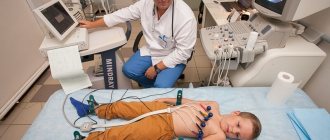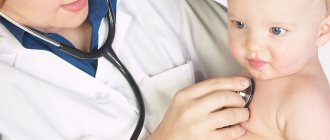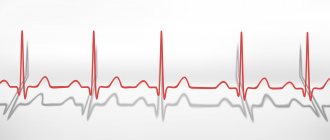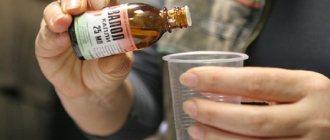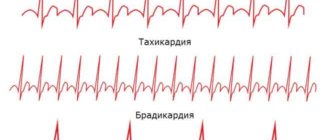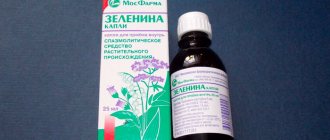5 / 5 ( 2 voices)
Bradycardia refers to a decrease in the number of heart contractions. Treatment is required only if it occurs against the background of another disease and has a pronounced clinical picture.
In this article we will answer the question of how bradycardia in children and sports are combined, and also give recommendations regarding lifestyle.
Sometimes bradycardia is diagnosed in completely healthy children and adolescents
General information
Literally translated from Greek, the term “bradycardia” means “slow heart”
In 89% of cases, the pathology is a combination of signs of various disorders of the human “engine”.
In 9% of cases, bradycardia progresses against the background of diseases of other organs and systems that affect heart rate. In very rare cases, it develops on its own and is diagnosed in healthy people.
Normal in children
Heart rate is directly related to age. This relationship is shown in the table below.
Table 1. Pulse rate in children:
| Age | Heart rate (beats/60 sec) |
| 120 |
| 110 |
| 90-100 |
| 80-85 |
| 70-75 |
Note! A clear sign of bradycardia is a decrease in readings by 20 units. To clarify the diagnosis, the specialist must take into account such subjective characteristics as temperament, physique, height and weight.
Symptoms
For each age group there is an acceptable heart rate (pulse) threshold.
- Newborns, less than 120 beats per minute;
- Child aged 1 to 7 years, less than 70 beats per minute;
- Child aged 7 to 18 years, less than 62 beats per minute.
The main signs of bradycardia are the following symptoms:
- When the heart rate slows down, the child loses consciousness;
- Arterial hypertension develops, leading to unstable blood pressure levels, for which it is difficult to find treatment;
- Fast fatiguability;
- Chronic circulatory failure.
Degrees of bradycardia
The main degrees of bradycardia are presented in the table.
Table 2. Degrees of bradycardia:
| Degree | Heart rate (beats/60 sec) |
| Lightweight | 50-60 |
| Moderate | 40-50 |
| Expressed | Up to 40 |
Mild and moderate bradycardia are considered the least dangerous to the life and health of a child. No special treatment is required, the heart rhythm improves on its own. Severe bradycardia requires seeking medical help.
Forms of pathology
The main forms of bradycardia are presented in the table.
Table 3. Main forms of bradycardia:
| Form of pathology | Description |
| Develops at 8 weeks, indicating the risk of developing chromosomal abnormalities. In 55% of cases, the child develops Down syndrome. |
| Develops after 8 weeks, indicating a violation of the placental circulation. The development of a serious pathology is indicated by a prolonged or constant decrease in heart rate. We may be talking about the formation of a heart defect. If after some time the heart rate returns to normal, then we are talking about the imperfection of the system of automatism of the sinus node. |
| Develops against the background of increased tone of the vagus nerve. The picture of the heartbeat is not distorted. |
| The cause of development is inhibition of sinus node activity. The rhythm is carried out by another part of the heart. |
| The reason is that some of the electrical impulses are not delivered to the ventricles. Heart rate decreases to 30-40 beats/60 seconds. |
Main reasons
Common causes of bradycardia in children and adolescents are presented in the table.
Table 4. Why bradycardia develops:
| Cause | % occurrence |
| 45 |
| 76 |
| 63 |
| 58 |
| 81 |
| 47 |
| 31 |
| 22 |
| 9 |
| 7,5 |
| 4,3 |
Note! In adolescence, bradycardia often accompanies rapid growth of the body.
Heart diseases
The table shows the % incidence of bradycardia against the background of cardiac pathologies.
Table 5. Pathological causes of bradycardia:
| Cause | % occurrence |
| 36 |
| 29 |
| 16 |
| 13,5 |
| 12,8 |
| 10,6 |
Other pathological causes
Other reasons that provoke the development of bradycardia in childhood and adolescence are presented in the table.
Table 6. Other causes of bradycardia:
| Pathology | % occurrence |
| 39 |
| 78 |
| 44 |
| 5,3 |
| 83 |
Causes of the disease
There are many conditions that can cause bradycardia. The main root causes of the disease are:
- congenital heart pathologies;
- infectious diseases;
- pathologies of the endocrine or nervous systems;
- increased intracranial pressure;
- taking potent medications;
- poisoning of the body with lead compounds or nicotine poisoning;
- cerebral circulatory disorders;
- hypoxia;
- active growth in adolescents.
The danger of the disease is that due to a decrease in heart rate, the brain experiences a lack of oxygen, all this negatively affects the functionality of absolutely all internal systems. With pathological changes, the human heart is forced to process a larger volume of blood, and this can only mean one thing - depletion of the myocardium, and, accordingly, the development of cardiac complications.
How does bradycardia manifest?
Sinus bradycardia has practically no manifestations. The children did not complain about deterioration in their health. When the pathology worsens, signs of general malaise come to the fore.
Note! A specific sign of bradycardia is a slow pulse. To count it, you should place the fingers of your right hand at the site of the artery on your left wrist.
Main features
The main symptoms of childhood bradycardia are presented in the table.
Table 7. Main symptoms:
| Cause | Description |
| The child complains of drowsiness and “wobbly legs.” Fatigue is observed even with minor physical activity. In 87% of cases, this symptom occurs in the morning, in the first hours after waking up. |
| Combined with increased sweating and minor headaches. |
| Combined with the release of cold, profuse sweat. |
| The child may feel sick. In severe cases, loss of consciousness occurs. |
| Initially, the child may want to eat, but his appetite decreases at the table. |
| The child “falls asleep” during lessons and completes assignments with great difficulty. |
| Minor. Most often there are slight tingling sensations in the heart. |
Severe bradycardia
In severe cases, symptoms of Morgagni-Edams-Stokes syndrome appear:
- sudden pallor against the background of short-term dizziness;
- convulsive muscle contractions;
- sudden loss of consciousness;
- respiratory arrest;
- involuntary urination;
- involuntary defecation.
Symptoms in teenagers
The main signs of bradycardia in children aged 12-17 years are presented in the table.
Table 8. Symptoms of bradycardia in adolescents:
| Symptom | Description |
| There are sharp changes from a calm state to aggression or tearfulness. |
| Obsessions and compulsions are present. In some cases, panic attacks occur against this background. |
| Characterized by sudden outbreaks of acne on the skin of the face. |
| Caused by a “lag” in the development of the endocrine system. |
What bradycardias are most common in children?
Depending on the mechanism of development (slowing the formation or conduction of a nerve impulse), as well as on electrocardiographic signs, the following types of bradyarrhythmia in children are distinguished:
- sinus;
- atrioventricular (atrioventricular) blockades of II and III degrees;
- intraventricular blockades (bundle branch blocks);
- sick sinus syndrome.
There are also intraatrial blocks, but they are rarely accompanied by a slow heartbeat. You can find out more about what it is and how to act correctly here.
Attacks of Morgagni-Adams-Stokes syndrome occur with atrioventricular blockade and sick sinus syndrome
The most common of all forms is sinus bradycardia.
Sinus bradyarrhythmia
Unlike other types, with sinus bradycardia the heartbeat is slow but rhythmic. It poses the least danger to the health and life of the child, i.e. is the most benign of arrhythmias,
I also want to note that sinus bradycardia is not always a pathology. For example, sinus bradyarrhythmia in a child can be observed during sleep. Children who play sports intensively and regularly perform intense physical exercise also often experience a similar phenomenon, which is the absolute norm. The issue of heart rate slowing in athletes is well discussed here.
Possible consequences
The table shows the possible consequences of bradycardia.
Table 9. What is the danger of childhood bradycardia:
| Complication | % occurrence |
| 10,2 |
| 15,3 |
| 18,7 |
| 20,5 |
| 11,3 |
| 8,6 |
| 7,4 |
| 8,2 |
Possible complications
The consequences of proper and timely therapy are minimal. To do this, you should strictly follow all the specialist’s recommendations. A slow heartbeat in a child can cause the following complications:
- poor health;
- decreased performance;
- cardiovascular failure;
- cardiac ischemia;
- ventricular fibrillation;
- diseases of the cerebral cortex;
- thromboembolism;
- myocardial infarction;
- cardiac arrhythmia, which leads to sudden death.
Bradycardia is especially dangerous in infants, since the heart beats quickly (3 contractions in one breath), and when the pulse slows down, blood circulation in tissues and organs is disrupted, ischemia and various diseases occur. Complications can lead to developmental delays, limited mobility and pose a threat to the child’s life.
What should I do?
If Morgagni-Edams-Stokes symptoms appear, the child requires immediate medical attention.
If bradycardia is not so aggressive, parents should also contact the clinic. First, the child is observed by a cardiologist or arrhythmologist. For adolescents 14-15 years old, daily electrocardiogram monitoring is recommended.
Clarifying the diagnosis
Bradycardia is detected using a stethoscope. After listening to the heart, the specialist counts the heartbeats. Additional diagnostics are prescribed to determine the cause of the pathology. Diagnostic techniques are discussed in the table below.
Table 10:
| Diagnostic method | Description |
| The doctor asks the child to do several squats. Bicycle ergometry is also recommended. |
| Conducted within 24 hours. Prescribed against the background of an uninformative ECG. |
| Helps identify possible heart defects. |
| Helps identify stagnation and changes in the size of the heart muscle. |
Note! Additionally, an examination by an endocrinologist is prescribed. This allows you to check the functional state of the thyroid gland.
Adolescents 14-17 years old are additionally examined by a neurologist.
Stopping an attack
Zelenin drops are used in strict accordance with the recommendations of the emergency doctor
The instructions look like this:
- Place the baby on his back. A small dense cushion is placed under his head. The lower limbs should be slightly above body level. If the child is unconscious, then he is laid on a hard surface, and a sofa pillow is placed under his shoulders.
- Increase your heart rate. Zelenin drops are used for this. You must act in strict accordance with the doctor's recommendations.
- If the pulse cannot be felt, perform an indirect cardiac massage. This helps restore blood circulation and helps restore breathing.
If necessary, artificial respiration is performed.
Diagnostic methods
More complex forms are easier to detect, since there are more signs of changes in the activity of the heart muscle, so they can be identified using an ECG. To diagnose heart rhythm in adolescents, a stress ECG test can be used, where the child is asked to do some physical exercise and then the condition of the heart is looked at.
If there is a suspicion of a heart defect, the little person will be sent for an ultrasound or MRI of the myocardium. In addition, to confirm the diagnosis and identify possible disorders in the body, the child will need to see an endocrinologist, neurologist, take a blood test and have a chest x-ray to rule out bruises of the sternum.
Drug therapy
Drugs are prescribed for severe bradycardia. The main goal of drug therapy is to relieve symptoms and improve well-being.
Self-administration of medications is prohibited, as this may worsen the clinical picture.
Use of herbal remedies
The table contains recommended herbal remedies.
Table 11. Herbal preparations:
| A drug | Description |
| Affects metabolism, nervous and vascular systems. |
| It has a pronounced stimulating effect on the central nervous system and improves mental performance. |
| It has a neurogenic and antispasmodic effect. |
Use of other drugs
The best drugs prescribed for children are presented in the table.
Table 12. The most effective drugs for bradycardia:
| A drug | Description | Price |
| Increases the frequency and strength of contractions, helps normalize blood pressure. | From 165 rubles. |
| M-cholinergic receptor blocker, natural tertiary amine. | From 258 rubles. |
| Helps improve mental and physical performance. Has a stimulating effect on mental and motor activity. Accompanies a decrease in reaction time, temporarily reduces fatigue and drowsiness. In a small dosage, the effect of stimulating the nervous system predominates. | 51 rubles. |
| It has a stimulating effect on the activity of the heart, helps to increase the strength and number of heart contractions, and is accompanied by an increase in coronary blood flow and myocardial oxygen demand. | From 114 rubles. |
| Increases the strength and frequency of heart contractions. | From 174 rubles. |
Bradycardia in childhood
Bradycardia is a decrease in heart rate below the age norm. Based on age categories, indicators vary. For a newborn baby, the heart rate will be no more than 100 beats per minute. Bradycardia in preschool children is less than 70-80 beats; in children of primary school age and adolescents, the heart rate will be less than 60 beats per minute.
A parent can suspect bradycardia in a child based on indirect symptoms. These are weakness, fatigue, lack of appetite, dizziness.
Types of disease
Bradycardia in children is classified into the following types:
- absolute;
- relative;
- moderate.
The absolute type of disease is a constant slow heartbeat, regardless of the state of the body and how external factors influence it.
The relative type is characterized by a slower rhythm of contractions of the heart muscle due to the influence of a specific factor. Manifested by elevated body temperature.
A moderate type of disease occurs when the child has been exposed to the cold for a long time.
There is also:
- sinus bradycardia;
- heterotopic bradycardia.
The most common pathology is sinus bradycardia. It happens:
- congenital;
- acquired.
Acquired sinus bradycardia appears through damage to the sinus node (in rare cases). It can also occur with an increase in the tone of the vagus nerve and a decrease in the tone of the sympathetic nervous system.
Heterotopic bradycardia is the conduction of the heart rhythm by another node, or its development occurs due to blocking the passage of an impulse along one of the paths in the heart. For this reason, the heart rate decreases and is below 40 beats per minute.
To identify the type of rhythm disorder in a child, it is necessary to do an electrocardiogram.
How does the disease occur in the fetus?
During pregnancy, regardless of the period, a disturbance in the heartbeat of the embryo may occur with an increase or decrease in heart rate. This condition is dangerous, so immediate medical attention is necessary.
Bradycardia in the fetus is characterized by a decrease in heart rate less than 110 beats per minute. The normal heart rate for an embryo is 110-170 beats per minute. If the heart rate is more than 170 beats, this indicates tachycardia.
Knowing which indicators during pregnancy are considered normal and which are considered pathological, will allow you to promptly seek help from a specialist, begin treatment and bear a healthy child.
Why does the disease appear in the fetus?
Bradycardia in an embryo during pregnancy indicates the occurrence of a pathology - fetal distress, which is accompanied by slow activity inside the womb.
Causes of bradycardia.
- Placental insufficiency during pregnancy, which develops due to disruption of transport, endocrinological functions, metabolic disorders of the placenta.
- Compression of the umbilical cord.
- Drop in blood pressure during pregnancy.
- Use of analgesics and beta blockers during pregnancy by a woman.
- Concomitant diseases in a pregnant woman (toxicosis, heart and vascular diseases, eclampsia).
A disorder of the transport function of the placenta during pregnancy occurs as a result of a disturbance in the oxygen saturation of the pregnant woman’s blood, which often occurs with cardiac, vascular, or pulmonary failure. Metabolic and endocrine dysfunction of the placenta are characterized by hormonal changes in the body.
A decrease in heart rate occurs as a result of hypoxia. It occurs when there is poor oxygen supply to the placenta, which indicates anemia.
Infantile bradycardia
When examining a baby in the first days of his life, doctors are guided by a heart rate indicator of 90 beats for premature babies and 80 beats for full-term babies.
Reasons for the development of the disease.
- Congenital heart pathology.
- Infectious diseases.
- Manifestation of pathologies of the endocrine system.
- Pathology of the nervous system.
- Household poisoning.
- Overdose and intoxication with drugs that contain atropine, glycosides (used to help a woman in labor, but cause intoxication of the fetus).
The causes of the development of the disease in babies are often associated with brain injuries during childbirth, which lead to impaired blood flow in the brain and the occurrence of hypoxia. Bradycardia in newborns develops during hypothermia, hunger, and sleep.
As a child grows, a discrepancy may develop between large vessels, hormonal levels, and the rate of heart growth. The thyroid gland is most vulnerable.
Schoolchildren develop mental and physical stress, which not everyone can handle. The rapid growth of the skeleton and muscles leads to tension in the nervous and endocrine system, which intensifies during sexual development. Psychoneuroses occur in adolescents.
Signs of bradycardia in children:
- rapid loss of strength, even with light load;
- fainting occurs from time to time;
- reduced need for food;
- pale skin;
- teenagers have poor academic performance;
- memory impairment;
- pain in the chest;
- dyspnea;
- unstable pressure.
If there is a mild form of the disease, the child has no other symptoms other than a rare heartbeat.
Severe cases are typical:
- dizziness for a short period of time;
- sudden paleness of the skin, loss of reason;
- spasms;
- cessation of breathing;
- unconscious evacuation.
With such signs, the heart does not contract.
Treatment of bradycardia
The basis for curing the disease is correcting the disorders that led to bradycardia.
When a child’s bradycardia is mild, it does not affect the functioning of the brain in any way, the child does not feel it, then dietary nutrition and a vitamin complex that contains electrolytes are prescribed.
If there are attacks of the disease, the child is given an implant - an electrode.
We recommend that children consume the following products:
- bananas;
- baked potato;
- dried fruits;
- nuts;
- seafood;
- vegetable oils;
- strong brewed tea;
- milk products;
- porridge;
- vegetables fruits.
Do not consume fried, canned, spicy or smoked food. Eat 6 times a day.
This disease in children is a dangerous condition with serious consequences. Therefore, it is very important to seek help from a specialist at the first symptoms.
How to cure hypertension forever?!
In Russia, every year there are from 5 to 10 million calls to emergency medical care for high blood pressure. But Russian heart surgeon Irina Chazova claims that 67% of hypertensive patients do not even suspect that they are sick!
How can you protect yourself and overcome the disease? One of the many recovered patients, Oleg Tabakov, told in his interview how to forget about hypertension forever...
Read more "
SosudInfo.com
The use of folk remedies
Alternative therapy should be carried out simultaneously with medication.
Table 13. The best folk recipes:
| Means | How to cook? | How to apply (once/24 hours)? |
| Boil 500 ml of dry red wine over low heat. Pour 50 g of crushed dill seeds into a container of wine and boil for 10 minutes. Then the product is chilled and filtered. | 3, 20 ml. |
| 250 grams of nuts are ground, combined with 125 g of sugar and the same amount of sesame oil. Squeeze the juice from 2 lemons, combine with the prepared mixture, and stir. | 3, 15 g. |
| 15 g of herb is combined with 180 ml of very cool boiling water, boiled for 15 minutes, infused for 120 minutes, chilled, filtered. | 3, 30 ml. |
Treatment and prognosis
The manifestation of the first pathological abnormalities in a child should be the reason for an emergency visit to a pediatric cardiologist. With timely and adequate treatment, the prognosis for bradycardia is positive - the heart rhythm in children is restored.
A pronounced form of therapy requires emergency medical intervention; any delay or incorrectly selected treatment method can provoke serious complications, including death.
Drug treatment
Often, parents themselves choose pills for their child after watching advertisements or reading reviews (for example, Elkar). But medications for the treatment of bradycardia in children are selected individually for each little patient and only by the attending physician!
In this case, the patient’s age, the presence of concomitant diseases, physiological characteristics, tendency to an active lifestyle or vice versa, and so on are taken into account.
For mild cases of the disease, drug treatment is not prescribed to patients. It is important for the child to follow preventive recommendations and regularly undergo heart examinations by a cardiologist.
If bradycardia is moderate or pronounced, then the patient is indicated for therapy with antiarrhythmic drugs:
- atropine;
- ephedrine;
- Eleutherococcus extract;
- infusion of ginseng root;
- caffeine;
- belladonna, etc.
Traditional therapy
The use of traditional recipes for the treatment of cardiac abnormalities is permitted only in consultation with the treating cardiologist . When treating children, it is important to take into account that many folk remedies cause an allergic reaction in the child’s body.
For reference! It is impossible for traditional therapy to become the mainstay in the treatment of bradycardia. If the recipes of traditional healers are used, they should act as a comprehensive or auxiliary technique.
Food products that should be included in the child’s diet are used as folk remedies for the treatment of bradycardia Healthy foods include walnuts, seafood, and definitely seaweed.
To reduce the symptoms of the disease and strengthen the body, you can use a mixture prepared from ground walnuts, sesame oil, sugar and lemon juice (in equal proportions). Take the finished composition 1 teaspoon three times a day with warm water.
Sports load
Moderate physical activity is recommended for children and adolescents. It is strictly forbidden to lift or carry heavy objects or hold your breath.
Note! It is not recommended to engage in professional sports, and the child is not given an exemption from physical education in 76% of cases.
Recommended sports
The plate provides information about recommended sports for children and adolescents with mild bradycardia. Your doctor can also recommend a specific type of sports activity.
Table 14. What sports can you do:
| Child's age | Kind of sport |
| Swimming (diving excluded) |
| A ride on the bicycle |
| Athletics |
| Volleyball |
| Basketball |
| skiing |
Moderate bradycardia and sports
The table lists the types of sports activities recommended for moderate bradycardia.
Table 15. Sports for moderate bradycardia:
| Age | Type of load |
| Nordic walking |
| Running in soft ground |
| Riding an exercise bike |
| Yoga |
| Pilates |
Lifestyle with arrhythmia
A child with bradycardia is recommended to engage in swimming, gymnastics and hardening . Physical activity is not prohibited, but you need to choose a calm sport. Weightlifting and exhausting workouts are contraindicated.
Adolescent children should be closely monitored to ensure they do not develop bad habits (smoking).
The patient's diet should include seafood, walnuts, strong tea, vegetables and fruits containing high levels of potassium and magnesium. Giving coffee to children is not recommended.
Dietary recommendations
The diet of a child with bradycardia should include seafood, seaweed and seaweed.
The following should be excluded from the menu:
- fatty cakes;
- fast food;
- sweet carbonated drinks;
- fat meat;
- fatty fish.
You should also enrich your child’s diet with vitamins E and C. These substances strengthen the cardiovascular and nervous systems and help normalize their functional state.
Products with vitamin E
This vitamin helps improve general condition and normalizes the functioning of the nervous system. The daily requirement is 5-15 mg. The table shows foods high in this substance.
Table 16. Foods rich in vitamin E.
| Product | Vitamin E content (mg/100 g) |
| 39,2 |
| 35,1 |
| 15,3 |
| 9,33 |
| 5,65 |
| 3,81 |
| 1,89 |
| 1,17 |
| 1,13 |
Vitamin C Products
This vitamin is an excellent antioxidant. The daily need for it is 50-75 mg.
Table 17. Foods rich in vitamin C.
| Product | Vitamin C content (mg/100 g) |
| 426 |
| 228,3 |
| 58,8 |
| 34,4 |
| 29,1 |
| 26,7 |
| 18 |
Prevention
- If the child is an athlete, make sure that he does not overwork and does not lead an overly active lifestyle;
- Eating foods containing fiber, eating properly for your child from birth, so that later it is not too late. Give your child fruits and vegetables, avoid fried and spicy foods;
- After consulting a doctor, take the medications prescribed by him;
- Treat diseases in a timely manner, even a banal acute respiratory infection.
By following and ensuring that these simple rules are followed with your child, you will help him grow up healthy. For accurate and detailed information and advice, please contact your hospital doctors.
